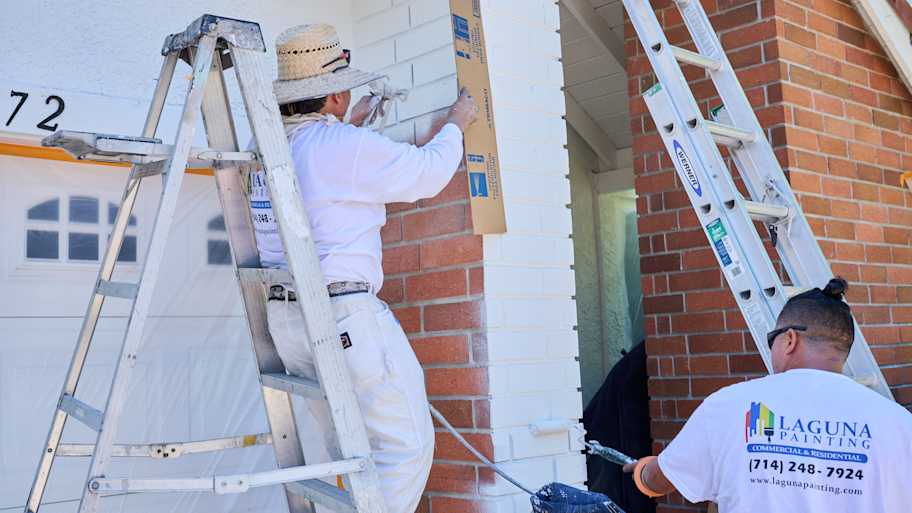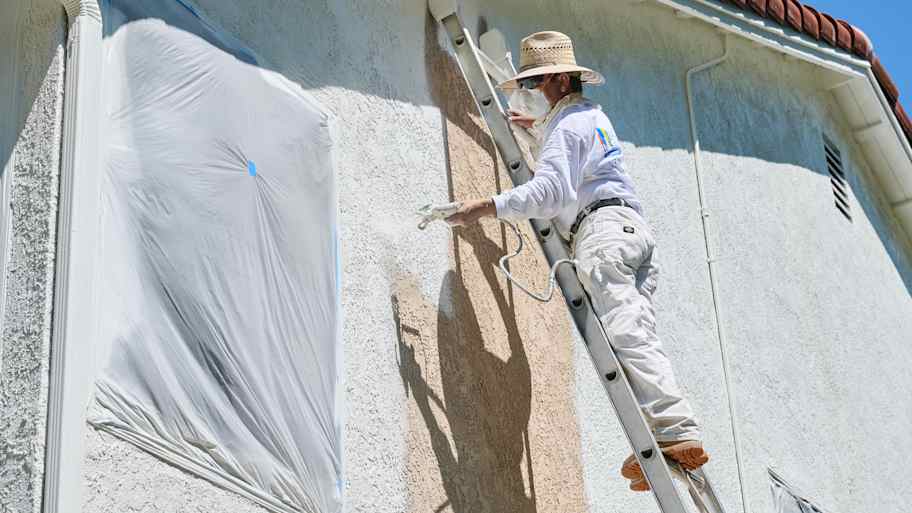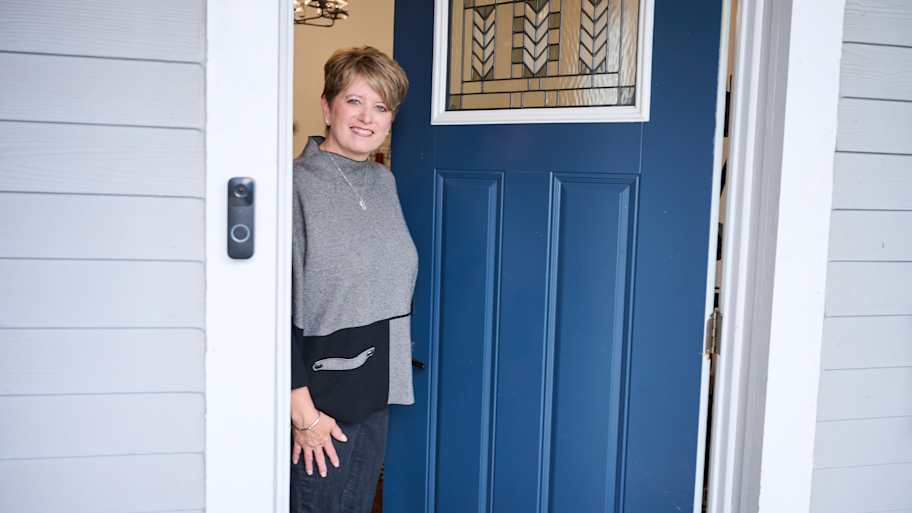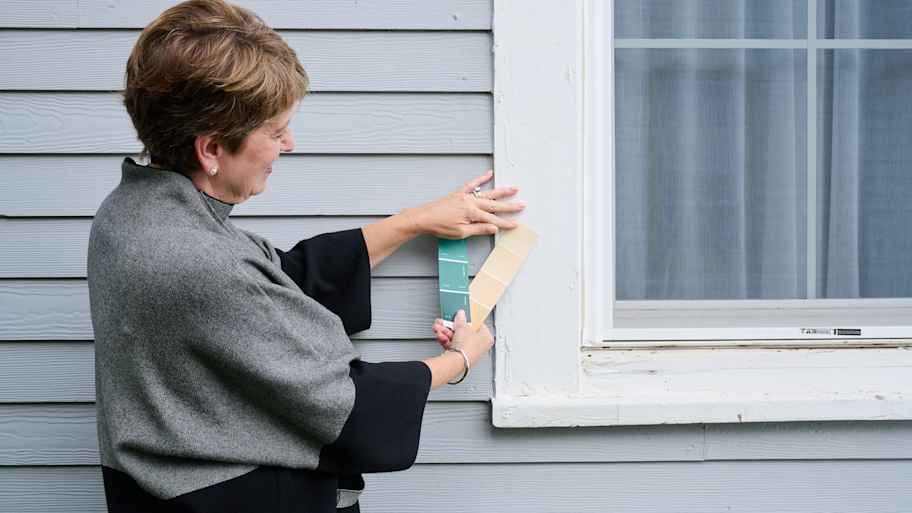Wood Stain vs. Paint: Which Is Right for Your Next Project?
Paint or stain wood with confidence
Should you paint your kitchen chairs canary yellow or stain them copper brown? While a lot depends on your preferences, you’ll want to know the pros and cons of painting and staining wood before deciding. Learn more about the pros and cons to decide what’s right for your project.
Painting Wood vs. Staining Wood
Trying to decide between paint and stain is entirely a personal choice. You may like the look of wood in its natural state, and the choice to stain may be easy.
Either way, you can DIY this project or hire a local painter to paint or stain your wood surfaces.
Durability
If you are considering painting something like a hardwood floor, remember that you will see more peeling and chipping if you use paint, and it will require more touch-up work than stain. Painting will require more upkeep, but it may be worth it if you have your mind set on brick red floors.
“We usually recommend that you stain first and then, when the wood starts to deteriorate, paint,” says Bob Tschudi, Angi Expert Review Board member and general contractor in Raleigh, NC. “Once you paint wood, it’s a labor-intensive job to remove it.”
Most durable: painting wood
DIY Friendly
If you are debating whether to paint or stain your kitchen cabinets or shelves and want to do as little work as possible, staining the wood may be for you. You don’t have to do as much preparation as priming the cabinets; no topcoat is required once the stain is on.
Easiest to DIY: staining wood
Customization
Paint is a great way to add pops of color, where stain is neutral and will go with any decor.
Most options: staining wood
Ease of Project
If your surface is already painted and you want to stain it, you must completely strip all the existing paint off, which takes extra work. However, if you are working with natural wood and want to stain it, there’s no need for priming or a topcoat. Stain usually only requires one coat.
Project difficulty: tie (depending on the state of existing wood)
Life Span
If you are considering painting or staining a deck, remember that paint has a thicker barrier between the deck and the elements outside, which will preserve your wood better. While it may need more upkeep than stain, paint can protect more against algae and warping.
“We stained a deck annually that was in the sunlight for at least eight hours a day, and it still deteriorated over time,” says Tschudi. “Paint would have preserved it longer, but a sun-blocking structure such as a pergola or an awning would have provided several more years of quality use.”
Best protection: painting wood
Painting Wood Pros and Cons
Painting is a great way to add color and personality to your home. You can completely transform a shelf, wood floor, or mantle without spending a lot of money. Depending on your project, you can choose from oil or acrylic paint.
Pros
Variety of colors and sheens
Completely transforms and hides wood
Provides better protection than stain
Can paint over existing paint
Cons
More maintenance than stain, as it chips easier
More expensive than stain
If you want to repaint, you have to scrape and sand as much of the existing paint off as possible to get the new coat to stick properly
Staining Wood Pros and Cons
Stain is great if you want an all-natural look or feel you already have enough color in your room. It penetrates wood by soaking in and allows you to see the grain and design of the wood while enhancing it.
You can also choose a solid stain, which has more pigment than normal stain and provides great coverage and protection without a topcoat.
Pros
Lasts longer than paint
No need to prime first
Stains are less expensive than most paints
Wears off slowly and doesn’t chip or peel
Cons
Can’t stain over existing paint
Doesn’t come in a lot of different colors or sheens
Doesn’t protect wood as well as paint does
Don’t let impatience ruin your finish. Oil-based paints require 24 hours to dry before you add another coat. Latex paints dry quicker, needing only 4 hours between coats.
Cost to Stain or Paint Wood
The cost of staining or painting wood can vary significantly depending on whether you choose to do it yourself or hire a professional. Each option has its own set of expenses and considerations.
If you plan to DIY, in addition to purchasing brushes, rollers, and other types of equipment, you can expect to pay $10 to $20 for a quart of wood stain. Regarding the cost of paint, the price range for a gallon is $20 to $70. Your labor, of course, comes at no cost except for time.
On the other hand, hiring a professional painter or staining contractor can provide convenience and expertise but at a higher cost. Interior painting by professionals costs between $1,000 and $2,900 on average, or $2 to $6 per square foot.
Staining contractors bill between $40 and $70 per hour for their services, such as for a wooden deck. Labor expenses make up a significant portion of the overall cost for staining a deck, potentially as much as $800 for a job requiring up to 20 hours. Remember that this doesn't include the cost of prep work like sanding or power washing.
DIY vs. Hiring a Pro
Engaging in DIY projects provides several advantages, such as cost savings, bragging rights, and the convenience of setting your own timetable. Nevertheless, conducting a comprehensive self-assessment of your skills is essential before starting any project. Confirm that you have the expertise to guarantee satisfactory work and the ability to address safety concerns effectively.
While hiring a local painting professional incurs labor expenses, it can also offer peace of mind. Experienced professionals deliver high-quality work, often accompanied by warranties, ensuring long-term quality and alleviating concerns about the project's success.
Katie Smith contributed to this article.
Frequently Asked Questions
Applying a sealer after staining is often recommended, especially for outdoor wood surfaces like decks or fences. It helps protect the wood from moisture, UV rays, and other elements, extending the life of the stain and preserving the wood's appearance. It also enhances the stain's durability and resistance to wear and tear.
However, in some indoor applications, a sealer may not be necessary, depending on the type of stain used and the level of protection required. Always check the specific product recommendations and consider the wood's exposure and usage when deciding whether to apply a sealer after staining.
Whether to brush or roll stain on wood depends on the project and your preference. Brushing is ideal for smaller, intricate areas and offers more control over the application, ensuring thorough coverage and penetration into the wood's grain.
Conversely, rolling is efficient for more extensive, flat surfaces and can save time. However, it is not always the best fit for textured or uneven wood. Some projects may benefit from combining both methods, using a brush for detail work and a roller for broader areas. Ultimately, the choice between brushing and rolling depends on the specific requirements of your staining project.
The longevity of paint on wood depends on factors like the quality of the paint, surface preparation, exposure to elements, and maintenance. Exterior paint on wood surfaces can last 5 to 15 years or more with proper care and maintenance. Interior paint tends to have a longer life span, often 10 years or more. Regular cleaning, touch-ups, and addressing any issues like peeling or cracking can extend the life of the paint.





- Paint vs. Stain for Your Deck: Which Is Best for Your Project?
- Types of Exterior Wood Stains for Your Deck and Beyond
- 6 Best Hardwood Floor Stain Colors and 10 Tips on How to Choose
- Can You Paint Over Stain? Here’s What to Know
- What Are the Pros and Cons of Staining a Deck?
- The Best Way to Stain Your Deck
- What’s the Difference Between Stain and Paint?
- How Long Does Deck Stain Take to Dry? How to Get a Flawless Finish
- How Often to Stain Your Deck and When to Do It
- 10 Benefits of Exterior Painting and Staining












